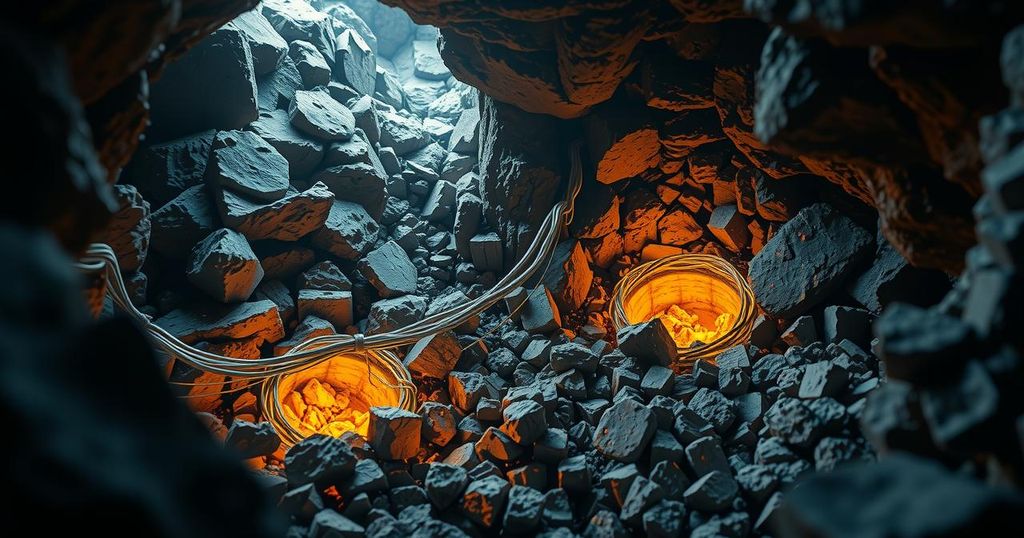An underground mining activity at Fosterville Gold Mine in Victoria caused a 3.5 magnitude earthquake today, reported by Geoscience Australia. Although minor and not expected to lead to aftershocks, the quake was felt across the state. The mine emphasized their safety protocols and community engagement following the event, highlighting the relationship between mining operations and induced seismicity.
Activity stemming from underground mining operations at the Fosterville Gold Mine triggered a 3.5 magnitude earthquake in central Victoria today at 6:41 AM, as confirmed by Geoscience Australia. This earthquake, occurring approximately 26 kilometers northeast of Bendigo, prompted tremors reported by 47 individuals across the state, with some feeling the effects as far away as Glen Huntly in Melbourne. Geoscience Australia’s Senior Seismologist, Jonathan Bathgate, remarked that the quake was minor and no aftershocks are anticipated, emphasizing that such tremors are typically short-lived and unlikely to cause damage. Fosterville Gold Mine acknowledged that they experienced a “mine-induced seismic event,” explaining that while the mechanisms behind this phenomenon resemble those of an earthquake, they are directly attributable to mining activities. A spokesperson assured the public, stating, “Our people are safe and we have protocols in place to respond to these events underground, which we are currently working through.” Furthermore, the mine has established a dedicated community engagement team to address public concerns, having set up a marquee in Axedale for residents seeking information. Fosterville Gold Mine, operated by Canadian-based Agnico Eagle Mines Limited, is the largest gold producer in Victoria. The mine’s operations modify the pressure exerted on the surrounding rock, leading to fracturing and subsequent ground vibrations. An underground seismic monitoring system is in place to identify and document these occurrences. Bathgate added that Victoria is among the states with higher seismic activity in Australia, observing that, “Generally, they are quite small, but occasionally we get these larger ones, like those of magnitude fours that have occurred in Victoria this year.”
The recent earthquake in Victoria results from mining activities characteristic of gold extraction in the region. Seismology studies have shown that mining operations can induce seismic events due to the alteration of pressure on underground rock formations. The phenomenon, known as mine-induced seismicity, can sometimes yield tremors resembling earthquakes, albeit with specific causative mechanisms directly linked to human activity. Victoria is recognized for higher seismicity levels within Australia, with numerous recorded earthquakes, underscoring the geological complexity of this area.
In summary, the 3.5 magnitude earthquake in central Victoria, attributed to mining activities at the Fosterville Gold Mine, has raised awareness about the relationship between mining and seismic events. Despite being non-damaging, the incident has prompted community outreach efforts to address public concerns about safety and seismic phenomena. Geoscience Australia continues to monitor seismic activity in Victoria, reinforcing the state’s geological significance and the implications for local communities.
Original Source: www.9news.com.au






